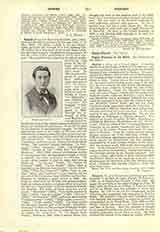

Coptos, a titular see of Upper Egypt. It was the chief town of the Nomos of Harawi (Two Hawks), and was once politically important, but under the eleventh dynasty it was overshadowed by Thebes. Its principal god was Manou, with an Isis and an Horus infant; the remains of their temple were explored by Flinders Petrie in 1894. Coptos was at the starting-point of the two great routes leading to the coast of the Red Sea, the one towards the port Ta’ ou (Myoshormos), the other more southerly, towards the port of Shashirit (Berenice). Under the Pharaohs the whole trade of southern Egypt with the Red Sea passed over these two roads; under the Ptolemies, and in Roman and Byzantine times, merchants followed the same roads for purposes of barter with the coasts of Zanzibar, Southern Arabia, India, and the Far East. Coptos was most pros-serous under the Antonines; it was captured in 292 by Diocletian after a long siege, but soon recovered its former standing. In the sixth century it was called Justinianopolis. The see was suffragan of Ptolemais in Thebais Secunda. Five bishops are known (Lequien, II, 607): Theodorus, a partisan of Meletius; Phcebammon in 431; Sabinus in 451; Vincent, author of the “Canonical Solutions”, preserved in an Arabic translation and highly es-teemed by the Copts; Moyses, who wrote the panegyric of Vincent. Under the caliphs and the sultans Koptos remained one of the chief cities of Said. In 1176 its Christian inhabitants raised the standard of revolt against the Mussulmans, but were promptly suppressed by El Adel, brother of Saleh ed-Din (Sala-din), who hanged nearly 3000 on the trees around the city. In the thirteenth century there were still in this region numerous monasteries. Coptos was ruined in the sixteenth century by the Turkish conquest. It is today a village called Kebt, or Keft, with about 2500 inhabitants, subject to the mudirieh of Keneh; it is situated near the right bank of the Nile, between Denderah (Tynteris) and Karnak (Thebes), about 620 miles from Cairo.
S. VAILHE

